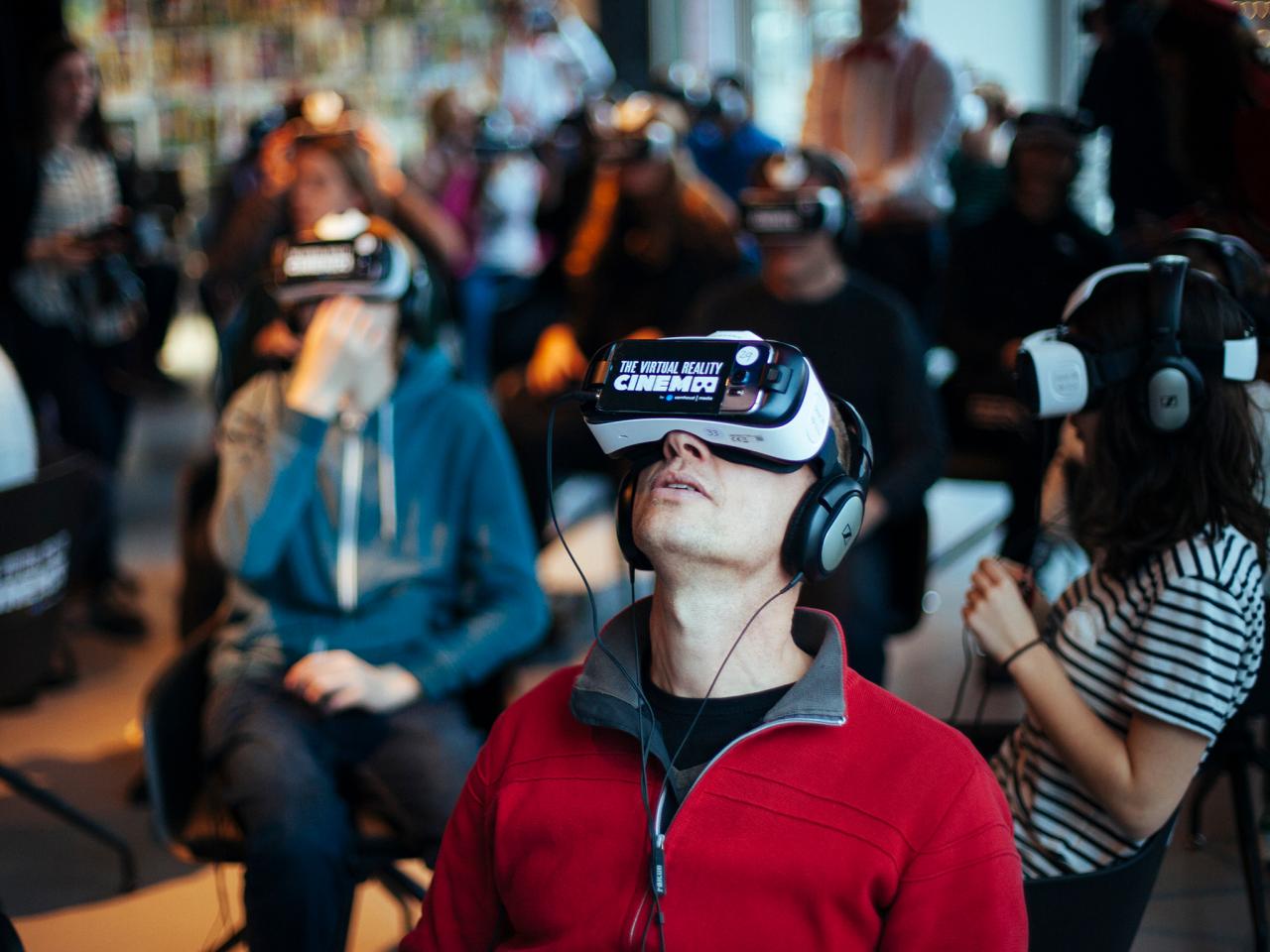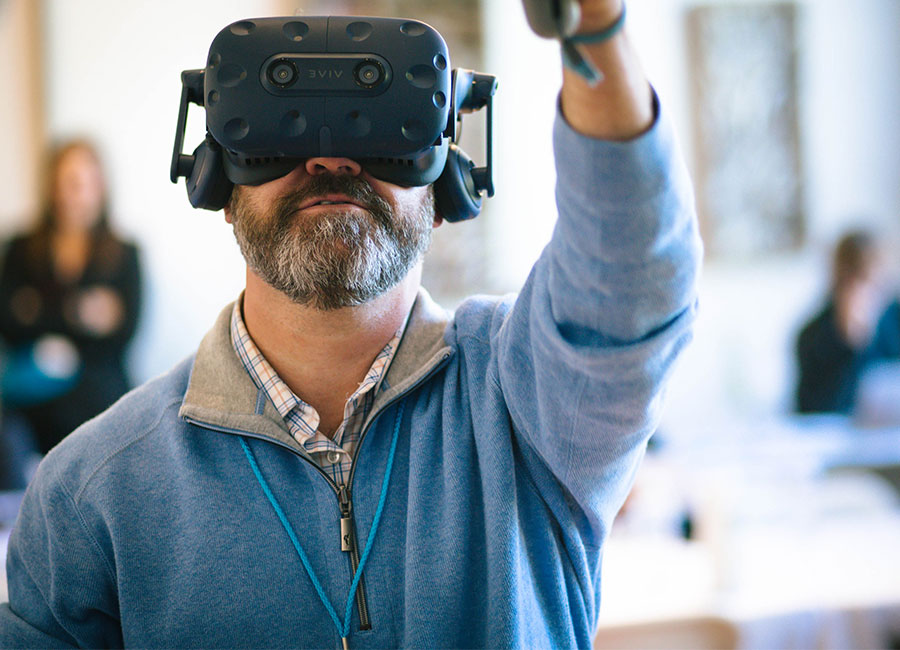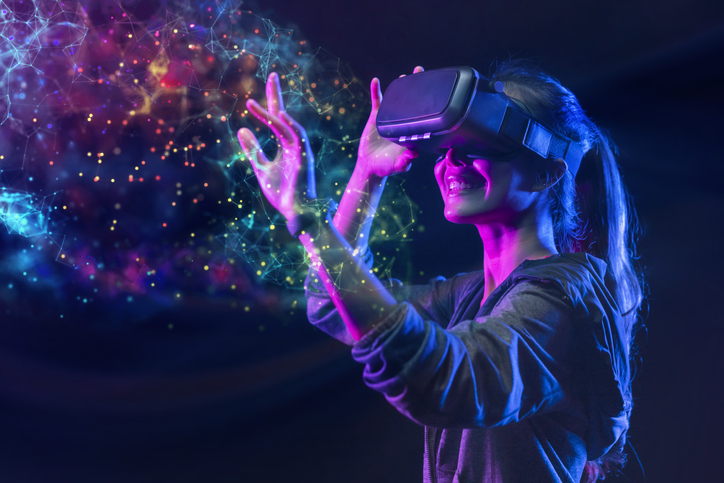Introduction
Virtual reality (VR) is a simulated environment that can be experienced through a headset. VR headsets are equipped with sensors that track the user's head and body movements, and this data is used to create a realistic and immersive experience. In recent years, VR has become increasingly popular, and it is now used for a variety of applications, including gaming, education, and training.
Artificial intelligence (AI) is a branch of computer science that deals with the creation of intelligent agents. Intelligent agents are systems that can reason, learn, and act autonomously. AI is being used to develop new VR experiences that are more realistic, immersive, and engaging.
In this article, we will discuss the potential of AI-based VR experiences. We will explore how AI can be used to improve the realism of VR, create more immersive experiences, and make VR more accessible to people with disabilities. We will also discuss some of the challenges associated with developing AI-based VR experiences.
The Potential of AI-based VR Experiences

AI has the potential to revolutionize the way we experience VR. By using AI, VR developers can create more realistic, immersive, and engaging experiences.
Improved Realism
One of the key challenges of VR is creating a realistic and immersive experience. AI can be used to address this challenge by generating more realistic 3D models, simulating complex physical interactions, and creating more believable artificial intelligence characters.

For example, AI can be used to generate photorealistic 3D models of objects and environments. This can help to create a more immersive experience by making the virtual world look more real. AI can also be used to simulate complex physical interactions, such as the way that objects interact with each other and the way that light interacts with objects. This can help to make the virtual world feel more believable. Finally, AI can be used to create more believable artificial intelligence characters. This can help to make the virtual world feel more alive and engaging.
More Immersive Experiences
In addition to improving the realism of VR, AI can also be used to create more immersive experiences. AI can be used to track the user's eye movements, facial expressions, and body movements. This data can be used to create a more personalized and immersive experience by adapting the virtual world to the user's individual needs. For example, if the user is looking at a particular object, the virtual world can zoom in on that object. If the user is smiling, the virtual world can react by displaying a happy face. And if the user is walking, the virtual world can move around the user.

Greater Accessibility
AI can also be used to make VR more accessible to people with disabilities. For example, AI can be used to create virtual reality experiences that are tailored to the needs of people with visual impairments. These experiences can use audio descriptions to provide information about the visual content of the virtual world. AI can also be used to create virtual reality experiences that are tailored to the needs of people with hearing impairments. These experiences can use subtitles or sign language interpretation to provide information about the auditory content of the virtual world.
Challenges of Developing AI-based VR Experiences

While AI has the potential to revolutionize the way we experience VR, there are also a number of challenges associated with developing AI-based VR experiences.
One challenge is the high cost of developing AI-based VR experiences. AI-based VR experiences require a significant amount of computing power and data. This can make them prohibitively expensive for many developers.
Another challenge is the lack of standardized tools and frameworks for developing AI-based VR experiences. This makes it difficult for developers to create VR experiences that are compatible with different VR headsets and platforms.

Finally, there is the challenge of ensuring that AI-based VR experiences are safe and ethical. AI-based VR experiences can be used to create realistic and immersive experiences that can have a powerful impact on people's emotions and behavior. This makes it important to ensure that these experiences are used responsibly and ethically.
Conclusion
AI has the potential to revolutionize the way we experience VR. By using AI, VR developers can create more realistic, immersive, and accessible experiences. However, there are also a number of challenges associated with developing AI-based VR experiences. These challenges include the high cost of development, the lack of standardized tools and frameworks, and the need to ensure that AI-based VR experiences are safe and ethical.

As the cost of computing power continues to decrease and the availability of standardized tools and frameworks increases, it is likely that AI-based VR experiences will become more common. This will make VR more accessible to people with disabilities and open up new possibilities for education, training, and entertainment.
Applications of AI-based VR Experiences
AI-based VR experiences can be used for a variety of applications, including:

- Education: VR can be used
Post a Comment